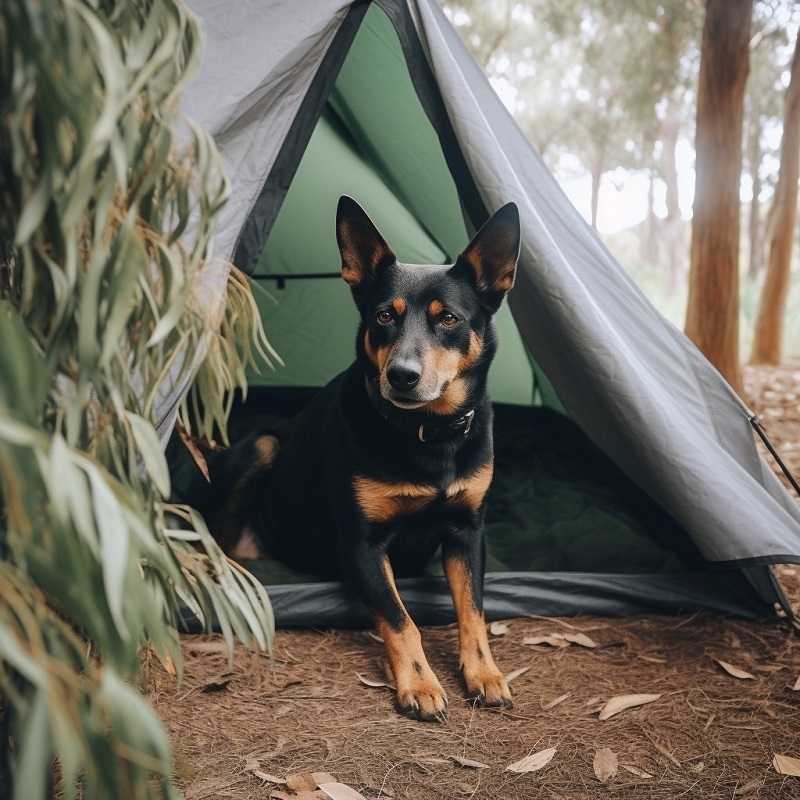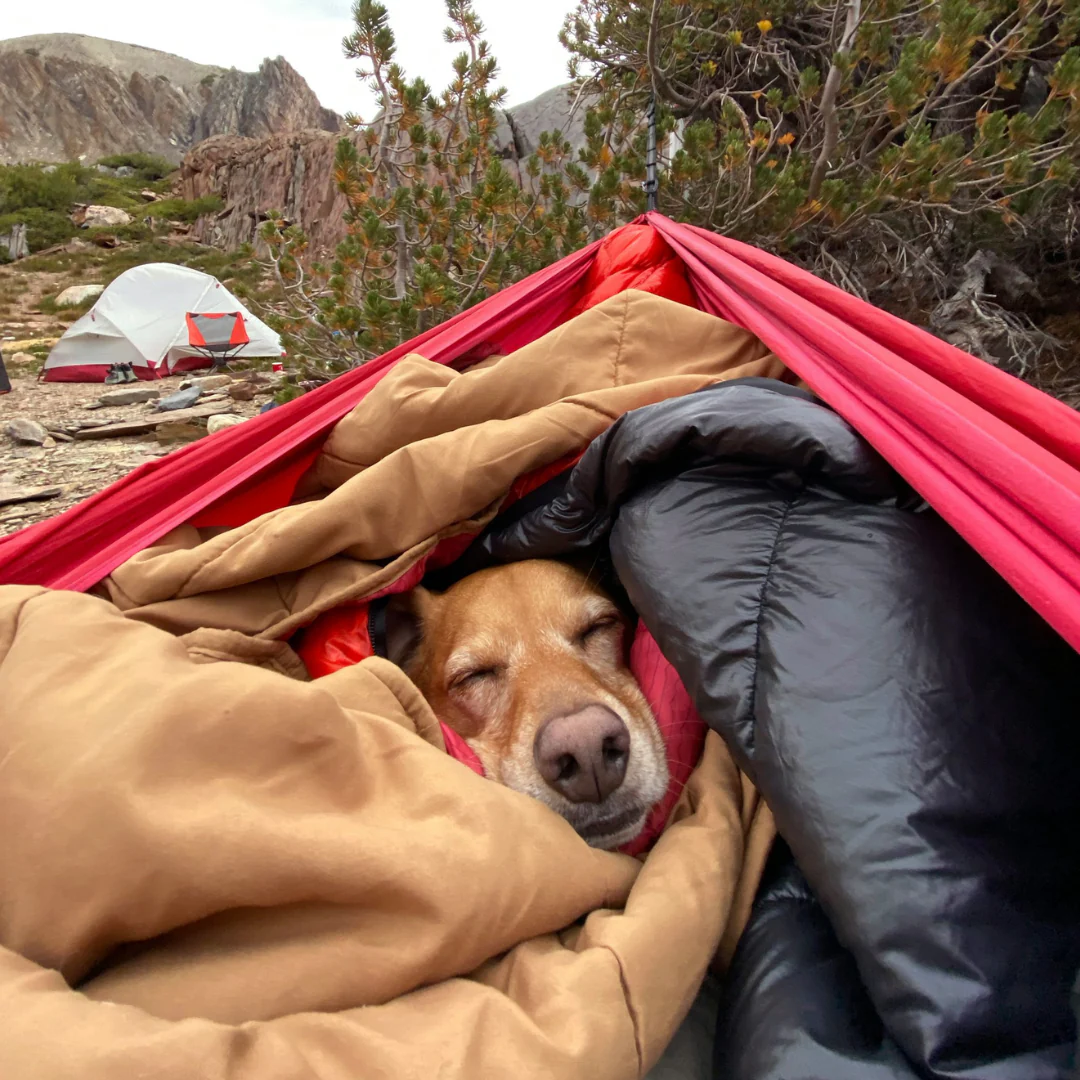Why Invest in a Dog Sleeping Bag?
Camping with your furry friend can be an incredibly rewarding experience. It allows you both to bond while enjoying nature and exploring the great outdoors. However, ensuring your dog’s comfort and safety during your adventures is of utmost importance. This is where a dog sleeping bag comes in handy. Designed specifically for dogs, these sleeping bags provide warmth, security, and a cozy spot to rest after long days of hiking and exploration.
In this article, we will discuss essential safety tips for using dog sleeping bags while camping. By adhering to these guidelines, you can ensure that your pet remains comfortable and secure throughout the trip. Let’s dive into how to select the right sleeping bag and how to use it effectively to enhance your camping experience.
Selecting the Right Dog Sleeping Bag
Consider Size and Fit
Choosing the appropriate dog sleeping bag is an essential first step. Dogs come in various shapes and sizes, so selecting a bag that accommodates your pet’s measurements is crucial. Here are several factors to consider:
Size: Measure your dog from nose to tail and choose a bag that allows for some extra room for them to stretch out comfortably. A snug fit can help in keeping your dog warm but too tight could restrict movement.
Weight Capacity: Ensure the sleeping bag is suitable for your dog’s weight, ensuring better insulation and comfort during colder nights. A lightweight bag is ideal for smaller breeds, while larger dogs might need more robust options.
Shape: Some bags are designed for specific breeds; consider a tapered shape for smaller dogs or a more open design for larger breeds. The design can affect how your dog uses the bag, especially if they like to curl up or spread out.
By understanding your dog’s size and comfort preferences, you can select a sleeping bag that will provide an enjoyable resting area after a day of outdoor adventures.
Material and Insulation
The material of the dog sleeping bag is equally important. It should be durable enough to withstand outdoor conditions while keeping your pet warm. Additionally, look for features such as:
Water-Resistant Fabric: Camping often involves unpredictable weather. A water-resistant sleeping bag will help keep your dog dry during damp nights, adding to their comfort and safety.
Insulation Type: For colder weather, choose bags with high-quality insulation materials like synthetic fibers or down feathers, which will help retain heat effectively. The right insulation can make a significant difference at night when temperatures drop.
Machine Washable: Active dogs can get dirty. Opt for a sleeping bag that is machine washable for easy cleaning after your trip. Regular cleaning ensures that your dog is sleeping in a hygienic environment.
By selecting a high-quality dog sleeping bag made of suitable materials, you’ll enhance your dog’s comfort and better protect them from the elements.
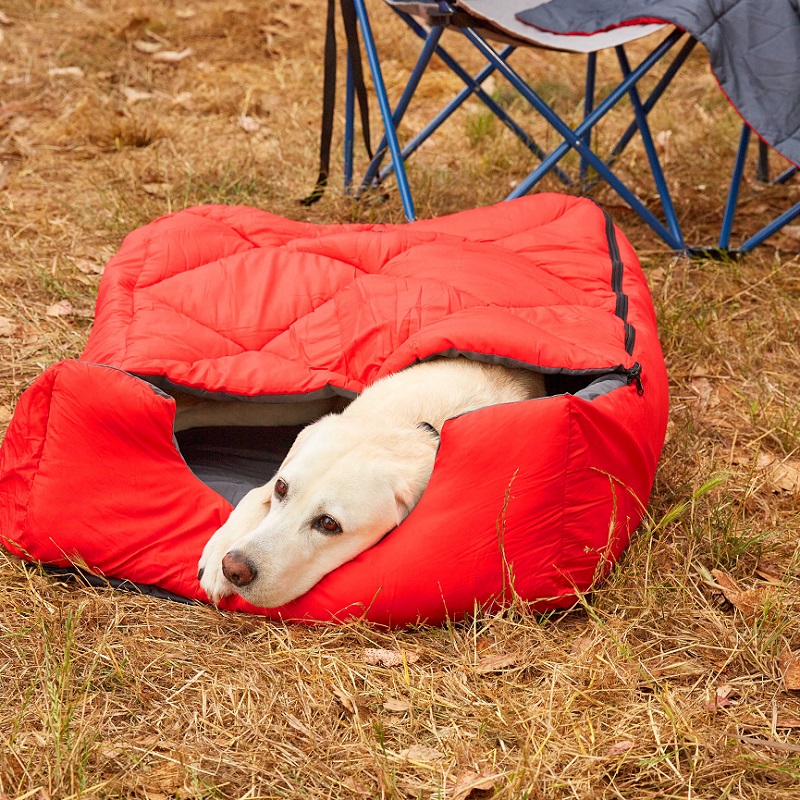
Creating a Safe Sleeping Environment
Choosing the Right Campsite
The location you choose to camp has a significant impact on your dog’s comfort and safety. Here are some tips on selecting the ideal campsite:
Level Ground: Ensure you select a flat area free from debris or sharp objects where your dog can lay down comfortably. A soft, level spot is not only more comfortable but also safer.
Away from Hazards: Stay clear of cliffs, pools of water, or any terrain that could pose a risk to your dog’s safety while they sleep or wander. Keeping a safe distance from dangerous areas will allow both you and your dog to relax.
Sheltered Areas: Look for campsites that offer some windbreak or natural shelter from the elements. This protection will keep your furry friend more comfortable during storms or windy nights. Trees and rocks can provide good shelter against the wind.
Choosing your campsite with your dog in mind helps prevent potential hazards and creates a more enjoyable camping experience for both of you.
Using the Sleeping Bag Effectively
Once you have selected the right dog sleeping bag and found a suitable campsite, ensure your pet is comfortable during the night. Follow these tips to create an inviting sleeping arrangement:
Familiarize Your Dog: Bring your dog’s favorite blanket or toy to help them feel comfortable and secure in their sleeping bag. Familiar items can ease anxiety in a new environment.
Introduce the Sleeping Bag: Allow your dog to explore the sleeping bag before camping. Familiarizing them with it can help them feel at ease when it’s time to rest. Let them sniff it and get comfortable in it at home first.
Secure Your Dog: If your dog tends to move around a lot while sleeping, consider securing the sleeping bag with tent clips or tying it down to prevent it from shifting. This security can help your dog feel stable and protected throughout the night.
By creating a safe and comfortable sleeping environment, you make it easier for your dog to rest and recharge for the next day of exciting adventures.
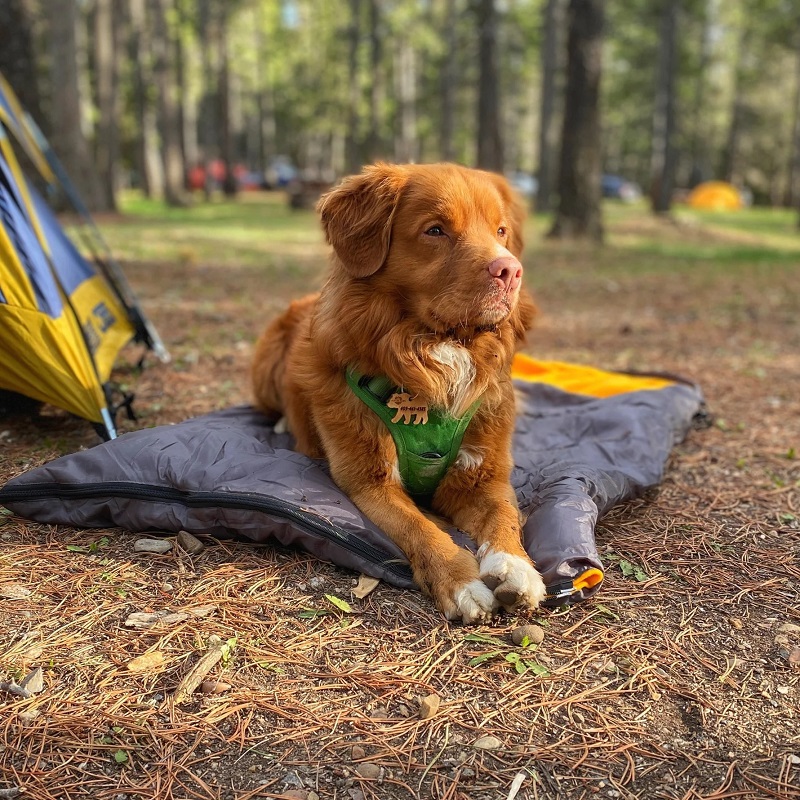
Keeping Your Dog Warm and Cozy
Layering for Insulation
During chilly nights, keeping your dog warm is essential for their comfort and safety. Here are some layering strategies you can use alongside the dog sleeping bag:
Dog Sweater or Jacket: If it’s particularly cold, dressing your dog in a sweater or jacket before tucking them into their sleeping bag can provide additional warmth. Consider materials like fleece for added insulation.
Insulating Blanket: Consider placing an insulating blanket beneath the sleeping bag for added warmth from the ground, as this can help retain body heat. This extra layer can also protect the sleeping bag from dirt and moisture.
Layering not only enhances your dog’s comfort but also helps in maintaining their body temperature throughout the night.
Monitor Your Dog’s Temperature
While using a dog sleeping bag can help keep your pet warm, it’s still crucial to monitor their temperature. Here are some indicators to watch for:
Frequent Shivering: If your dog shivers or seems restless, it may be a sign they need additional insulation or warmth. If you notice this behavior, it might be time to add another layer or blanket on top.
Panting: Conversely, excessive panting can indicate that your dog is too warm. In such cases, you should remove layers or adjust the sleeping bag to allow for better ventilation.
By closely observing your dog’s behavior during the night, you can identify any temperature-related issues and immediately adjust their sleeping arrangements as needed, ensuring their comfort and safety.
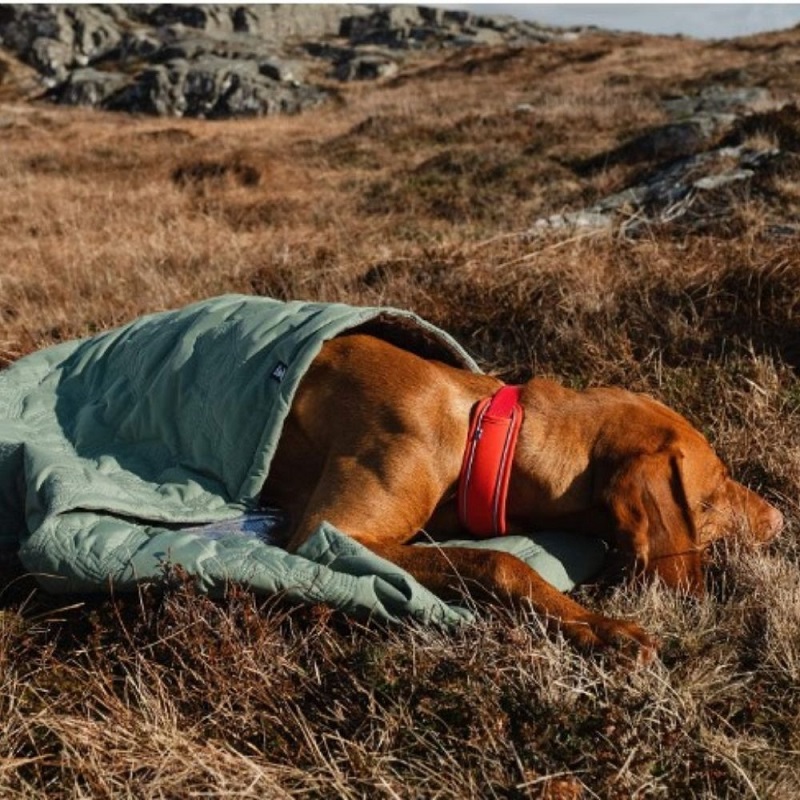
Ensuring Safety During Camping
Protecting Your Dog from Wildlife
Camping in nature often means encountering various wildlife. Protecting your dog from potential dangers is essential. Consider the following recommendations:
Keep Your Dog Leashed: Always keep your dog on a leash to prevent them from wandering into potentially dangerous areas or chasing after wildlife. A long leash can provide limits while allowing some freedom to roam.
Store Food Properly: Ensure food items are stored securely in bear-proof containers or elevated areas to deter wildlife. Your dog’s food should be well-protected to avoid attracting unwanted visitors that could pose risks to your pet.
Educate Yourself: Familiarize yourself with local wildlife that could pose dangers. Understanding the animals in the area helps you prepare and protect your dog appropriately.
By taking these precautions, you help ensure your dog remains safe while exploring the great outdoors.
Managing Allergies and Insects
In addition to wildlife, your dog may encounter allergies or insects while camping. Here are steps to manage these issues:
Check for Ticks: Regularly check your dog for ticks or other pests, especially after walks or hikes in wooded areas. Removing ticks promptly will reduce the likelihood of contracting diseases.
Use Flea and Tick Prevention: Apply flea and tick prevention treatments before camping to lower the risk of infestations. Consult your veterinarian for the best options ahead of your trip.
Watch for Allergens: If your dog has known allergies, keep an eye on their interactions with various plants and pollen. Immediate access to their allergy medication might be beneficial.
By staying vigilant about potential allergens and pests, you can create a safer camping environment for your dog, ensuring their health and comfort.
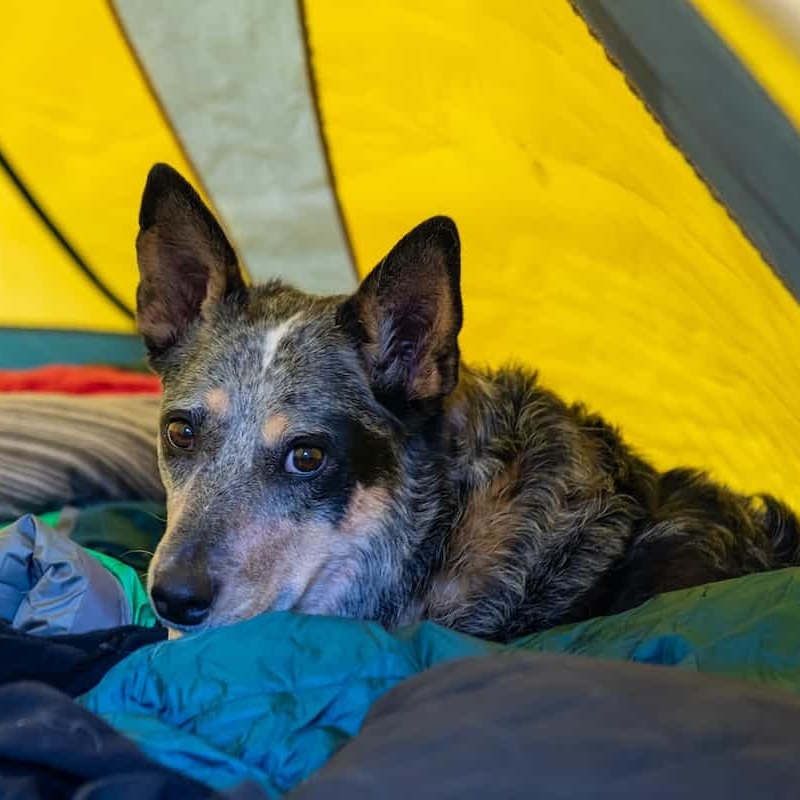
Cleaning and Storing Your Dog Sleeping Bag
Post-Camping Care
After a successful camping trip, it’s important to clean and maintain your dog sleeping bag to ensure longevity. Here’s how to do it effectively:
Spot Clean or Wash: Depending on the level of dirt and debris, spot cleaning may suffice. If necessary, follow the manufacturer’s washing instructions to ensure the fabric remains intact.
Dry Completely: Make sure the sleeping bag is entirely dry before storing it, as moisture can lead to mildew or odor issues. If your dog got wet during the trip, be particularly attentive in drying the bag thoroughly.
Check for Damage: Before storing, inspect for any rips or tears. Address any damage before the next use to prevent further deterioration.
Establishing a consistent cleaning routine can extend the life of your dog sleeping bag and ensure it’s ready for another adventure.
Proper Storage
When storing your dog sleeping bag, follow these tips:
Store in a Cool, Dry Place: Keep it away from moisture, heat, or direct sunlight, which can deteriorate the material and insulation. A closet or storage bin works well.
Use a Compression Sack: Consider using a compression sack for efficient storage. This helps save space while keeping the sleeping bag clean and organized.
By taking care in storing the sleeping bag, you ensure that it remains in optimal condition for your next camping excursion.
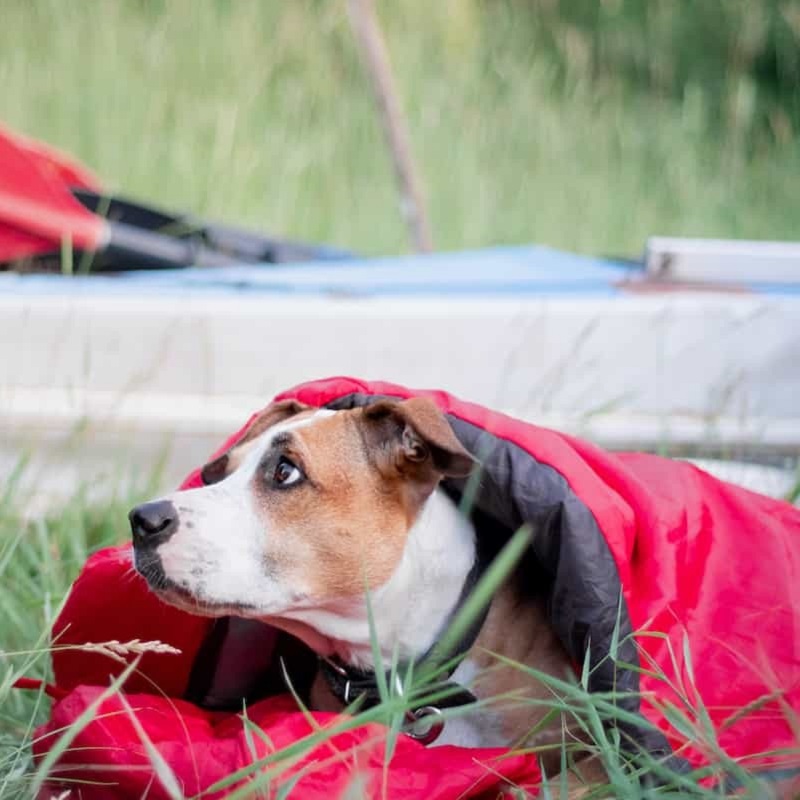
Create Memorable Camping Experiences
Camping with your canine companion can be one of the most enjoyable experiences for both of you. By equipping your dog with a cozy dog sleeping bag, you enhance their comfort and safety during your outdoor adventures. Following the safety tips outlined in this article allows you to create a nurturing environment for your dog, ensuring an unforgettable experience for both.
Ultimately, the right preparation and equipment will enable you to explore the great outdoors confidently, knowing your dog is comfortable and secure. So, pack your bags, include your dog’s sleeping bag, and embark on your next camping adventure together!
